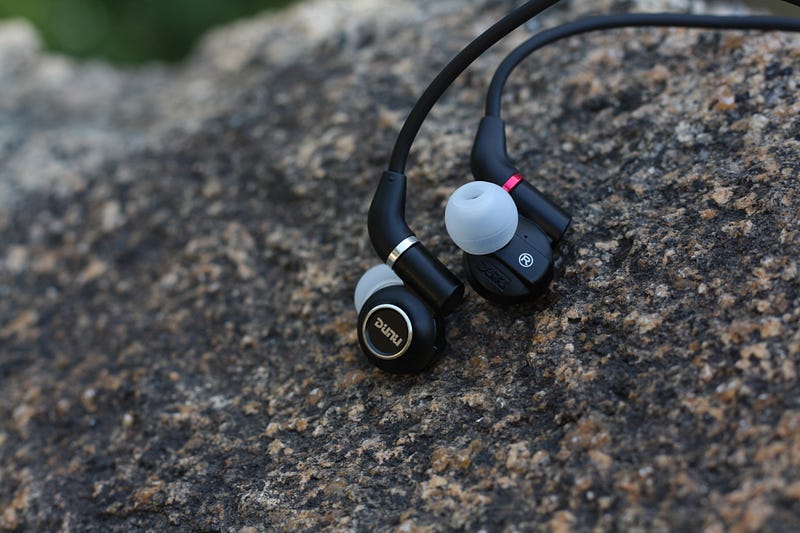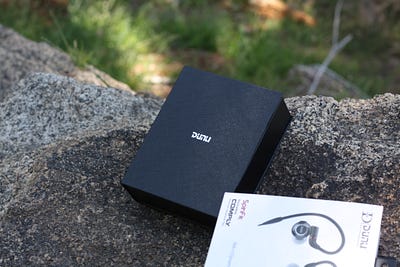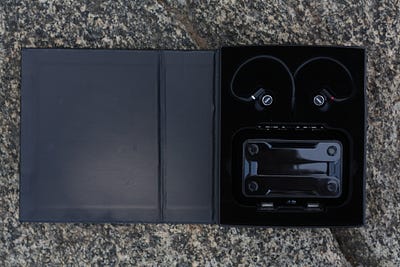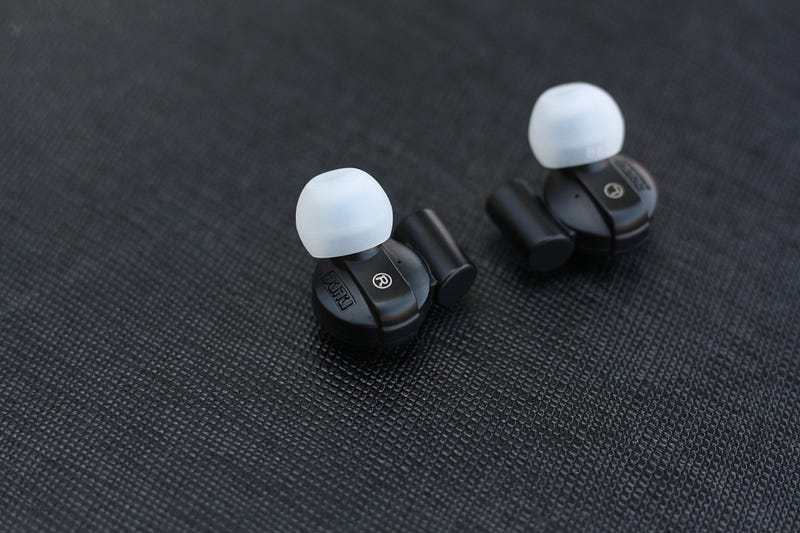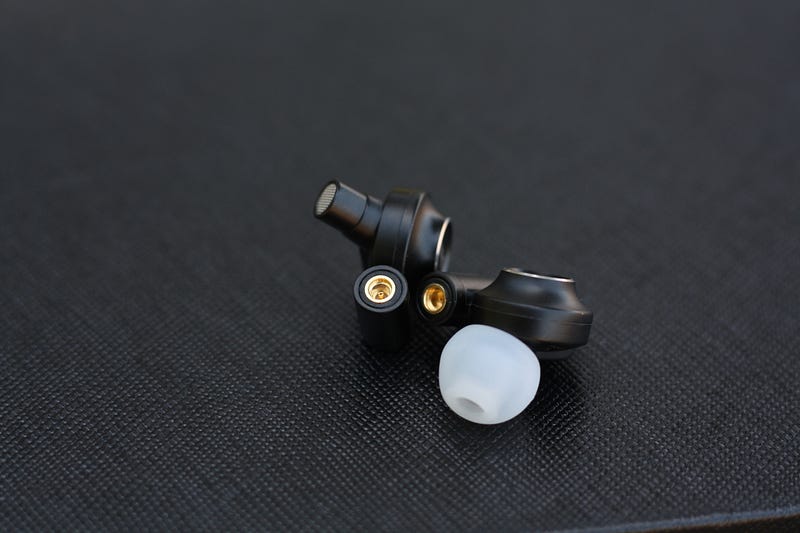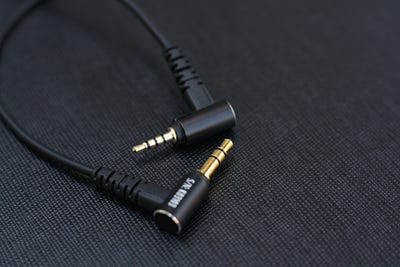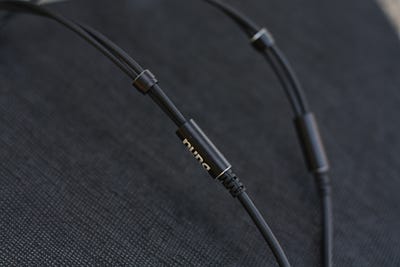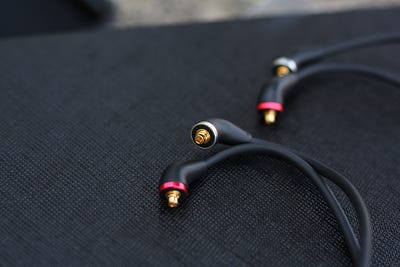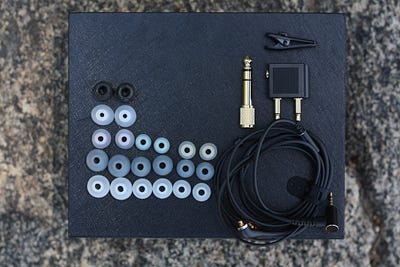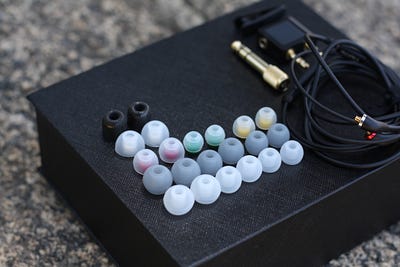DUNU DK-3001: Your Friendly Neighborhood Hybrid
A hybrid IEM is one that uses at least one dynamic driver in concert with at least one other balanced armature driver. This, in theory, allows the IEM to leverage the strengths of the dynamic driver to compensate for the weaknesses of balanced armature drivers. Such thinking is what drove DUNU to build their flagship IEM, the DK-3001, with three balanced armature drivers and one dynamic driver. Designed with sound-quality and durability as a priority, the DK-3001 seems like a compelling offering. But how hard does it work for its price tag?
You can find the DK-3001 for sale
here for $480.
About My Preferences: Heads up, I’m a person! As such, these words are my opinion, and they are tinged by my personal preferences. While I try to mitigate this as much as possible during my review process, I’d be lying if I said my biases are completely erased. So for you, my readers, keep this in mind:
- My ideal sound signature would be an extended sub-bass with a leveled, but textured, mid-bass. A slightly recessed, but linear, midrange, and a well-extended, but not overly strong, treble.
- I have a mild treble sensitivity.
Source: The DK-3001 was powered like so:
HTC U11 -> USB-C adapter -> earphones
or
Hidizs AP100 3.5mm out -> FiiO A5 3.5mm out -> earphones
or
HiFiMAN SuperMini -> earphones
or
PC optical out -> HiFiMe SPDIF 9018 Sabre DAC 3.5mm out -> earphones
All music was served as MP3 @320Kbps or as FLAC. The DK-3001 is source dependent and seems to prefer sources that have ~ 1.6 Ω of output impedance.
Tech Specs
- Frequency Response: 5Hz-40KHz
- SPL: 110+/-2dB
- Impedance: 13Ω
- Cable length: 1.2m
- Weight: 31g
Sound Signature
Sonic Overview:
The DK-3001 articulates a warm presentation with some boosting to the vocals at 1–2KHz and has a smoothly increasing emphasis on treble from 4KHz to 10KHz. Midrange recession is well metered and reminiscent of a V-shaped sound signature. The bass has a notable mid-bass hump that synergizes well with its sub-bass. Overall a quite rich sound signature.
Treble: Songs used:
In One Ear,
Midnight City,
Outlands,
Satisfy,
Little One,
Send The Pain Below
The DK3001’s treble is cohesive, resolving, and well toned. The faint amp-buzz in the intro of
In One Ear was easily distinguishable. Literally, each slam of the high-hats throughout the entire song was defined and distinguishable, with remarkable directional specificity too. In
Send The Pain Below you can clearly hear the fingers of the rhythm guitarist sliding up and down the strings during the bridge and opening, a feat made possible only by the remarkable precision of the DK-3001’s treble.
Treble-bound synths and sound effects sound pretty darn good as well. Any reasonably mastered electronic song will demonstrate this, but in this case,
Midnight City, my benchmark song for testing synths, proved it quite easily. The rhythm synth that plays in the background of the song during the intro and choruses was distinct and easily audible throughout the entire song, and never sounded sharp or blown-out.
Midrange: Songs used:
Flagpole Sitta,
Jacked Up,
I Am The Highway,
Dreams,
Too Close,
Little Black Submarines
The DK-3001’s midrange is built to handle all sorts of different mastering styles. Its extra warmth gave
Flagpole Sitta, a song mastered with an uncommon level of linearity, a good amount of warmth and wetness, almost like a well-tuned speaker system. Bass guitars (which live both in the lower midrange and the bass frequencies) sound well defined with distinctly weighty characteristic, especially in
Flagpole Sitta and
I Am The Highway.
Both electric and acoustic guitars take on a lifelike tonality that often escapes multi-BA ChiFi IEMs. With the Dk-3001, it’s not uncommon to be able to hear the individual plucking of an acoustic guitar or listen to fingers sliding down the individual frets of the neck during an electric guitar’s chorus. This makes listening to rock and jazz and absolute pleasure, the earlier of which the DK-3001 seems to be particularly suited to be paired with.
Bass: Songs used:
Moth,
Gold Dust,
In For The Kill (Skream Remix),
War Pigs (Celldweller Remix)
The DK-3001’s dynamic driver is very capable. It presents you with a bass that is full of impact and rumble. While it doesn't have as solid a presentation as, say, the B400, it has a much livelier and more life-like tonality than many of its BA-only competitors. It never overwhelms to stocky lower-midrange and avoids ever devolving into a mess; it’s quite professional in that way.
Bass speed is a bit above average for dynamic drivers but doesn’t reach the levels of titanium or PEEK drivers. It does, however, decay naturally and allow for the expression of complex tones and resonation.
EDM enthusiasts and bass-heads will find a friend in the DK-3001. Its a refreshingly capable take on a bassy-yet-detailed kind of IEM. I’ve not encountered one like this in a while, the last time being when I bought myself a Rose Cappuccino MK. II.
Packaging / Unboxing
Build
Construction Quality
The DK-3001’s shells are built entirely from a smoothly finished metal. Pressed with precision into the metal is a DUNU logo on both pieces. On the inner face of the shell is a small vent.
The nozzle is above average in the length. It is topped with a fine metal mesh that sites essentially flush with the nozzle’s tip.
A cylindrical volume is attached to the DK-3001’s shells. It contains the MMCX connectors. They are very firm and are attached quite well to their housing. The stock cables have zero free rotation, and can only be moved when deliberate force is applied. I expect them to naturally loosen over time, however.
The DK-3001 comes with two cables: one terminated with a 3.5mm jack and on terminated with a 2.5mm balanced jack. Other than their terminations, the cables are identical. The Y-splitter, chin slider, and jack housing are each made from a smoothly finished metal, capped with a silver accent. both the Y-splitter and jack housing have quite good stress relief.
The MMCX jacks are housed in plastic and are joined directly with the memory-wire ear-hooks on the cable. They act as a natural stress relief, so no extra reinforcement is necessary here.
Comfort
The DK-3001, in spite of its radical shape, is quite comfortable to wear. Due to its insertion depth, it is easy to get a nice seal using both silicone and foam eartips. I had no issues wearing the DK-3001 during my extended listening sessions.
Accessories
Inside the box you’ll find
- 1x hard carrying case
- 1x pair of Comply eartips
- 4x pairs of SpinFit eartips
- 6x pairs of silicone eartips
- 1x airline adapter
- 1x 1/4in adapter
- 1x shirt clip
- 1x 2.5mm cable
As is with most of DUNU’s products, the DK-3001 is exceptionally well-equipped. The vast array of silicone eartips included all but guarantees that you’ll find comfort with them. If that fails, you still have class-leading foam eartips to fill-in the gaps (haha, get it).
The included case is light, very hard, and features a cushioned interior. I have no doubts that the DK-3001 can survive some very harsh encounters when inside this case.
Comparisons
1: 1More Quad Driver ($200)
The Quad Driver, like the DK-3001, makes use of three balanced armature drivers and a single dynamic driver. They are both V-shaped, but the DK-3001 has a more pronounced and wetter mid-bass. The DK-3001 also features a more resolving treble that conveys more detail than the treble of the Quad Driver. And unlike the Quad Driver, the DK-3001 has an articulate lower-midrange, one that doesn’t get overwhelmed by the mid-bass. Given their price-differences, this is to be expected, but the DK-3001 decidedly outperforms the Quad Driver in every respect, at least to my ears.
2: DUNU Falcon C ($220)
The Falcon C is a fundamentally different type of IEM from the DK-3001. The Falcon C features a single dynamic driver while the DK-3001 uses a mix of both dynamic and balanced armature drivers. As far as sound goes, the DK-3001 is much more V-shaped and warm. The Falcon C has a more bright sound signature with a leaner mid-bass response and a similar sub-bass response. The rumble and punch of the Falcon C is cleaner than the DK-3001’s rumble and punch. The Falcon C’s dryer bass response is less suited for electronic genres than the DK-3001’s is, though. The Falcon C has similar levels of detail retrieval to the DK-3001 in the midrange and bass but ultimately loses to the DK-3001’s array of balanced armature drivers for detail retrieval in the treble.
Summary
DUNU’s hybrid flagship, the DK-3001, truly lives up to its moniker. Featuring a rich and engaging sound signature, plenty of detail retrieval, and a lively timbre, the DK-3001 carves out for itself a respectable image. After spending some time with the DK-3001, it is plain to see that it is one of the top choices for an IEM at this price-point. And while its ergonomics may not suit people with smaller ears, those whose anatomy can accommodate its unique shape will be glad they took the time to listen to it, especially if you are a fan of V-shaped sound signatures and heaps of bass!
As always, happy listening!










